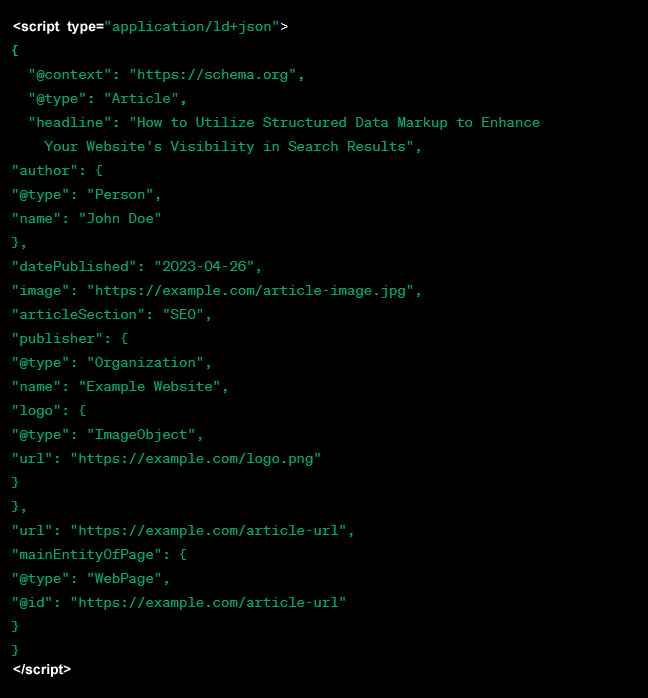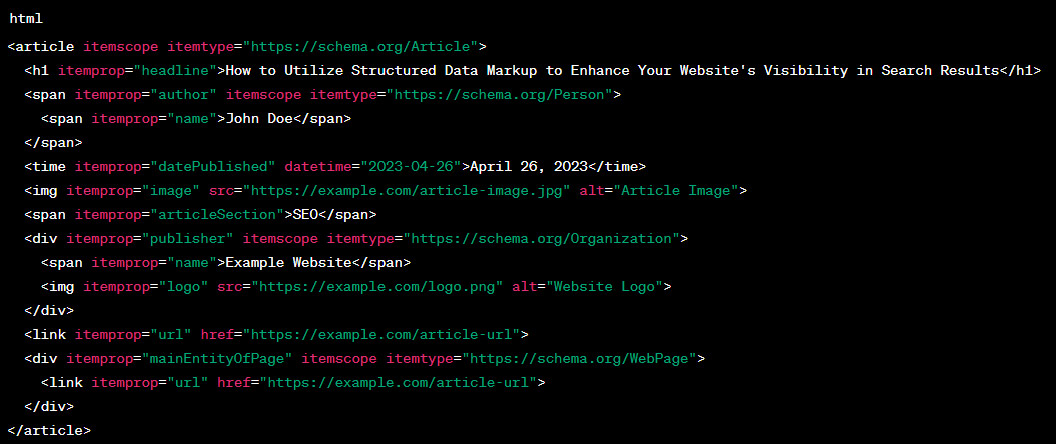How to Utilize Structured Data Markup to Enhance Your Website’s Visibility in Search Results
To maintain a competitive edge, it’s important to keep up with the latest developments in search engine optimization (SEO). One such development is the use of structured data markup, which can greatly enhance your website’s visibility in search results. In this article, we will delve into the intricacies of structured data markup, including its benefits, types, and implementation process.
What is Structured Data Markup?
Structured data markup, also known as schema markup, is a form of code that provides search engines with additional information about the content on your website. This additional information helps search engines better understand your content, which in turn, can lead to more accurate and rich search results.
Benefits of Structured Data Markup
Using structured data markup has several benefits:
- Enhanced search result listings: Structured data can be used to create rich snippets, which are enhanced search results that include additional information such as images, ratings, or prices. Rich snippets can help your website stand out in the search results, potentially leading to higher click-through rates.
- Improved content understanding: By providing search engines with additional context, structured data can help them understand your content more accurately, leading to better indexing and improved search rankings.
- Increased visibility for specific content types: Structured data allows you to specify the type of content on your website, such as recipes, events, or products. This can help your website appear in specialized search results, further increasing its visibility.
Types of Structured Data Markup
There are several formats for implementing structured data markup on your website. The most popular formats are:
1. JSON-LD
JSON-LD (JavaScript Object Notation for Linked Data) is a lightweight data interchange format that is easy to read and write. It is the recommended format by Google for implementing structured data markup.
2. Microdata
Microdata is an HTML5 specification that allows you to embed structured data within your HTML content. While not as straightforward as JSON-LD, it can be useful for websites that do not support JavaScript.
3. RDFa
RDFa (Resource Description Framework in Attributes) is an extension to HTML5 that provides a set of attributes for embedding structured data directly into your HTML content. Like Microdata, it can be useful for websites that do not support JavaScript.
Implementing Structured Data Markup on Your Website
Now that you have a basic understanding of structured data markup, let’s dive into the implementation process. Follow these steps to add structured data markup to your website:
Step 1: Choose the Appropriate Schema Type
The first step in implementing structured data markup is choosing the appropriate schema type for your content. Schema.org provides a comprehensive list of schema types and properties that you can use to describe your content. Some common schema types include:
Article: For news articles, blog posts, and other written content.Event: For events such as concerts, conferences, or webinars.Product: For products and services.Review: For reviews and ratings.Recipe: For recipes and cooking instructions.
Step 2: Create the Structured Data Markup
Once you’ve chosen the appropriate schema type, you’ll need to create the structured data markup using one of the formats mentioned earlier (JSON-LD, Microdata, or RDFa). Here’s an example of JSON-LD markup for an Article schema:
Step 3: Add the Structured Data Markup to Your Website
Once you’ve created the structured data markup, you’ll need to add it to your website. For JSON-LD, simply add the generated script to the <head> section of your webpage. For Microdata or RDFa, make sure the markup is integrated within your HTML content.
Step 4: Test and Validate Your Markup
After adding the structured data markup to your website, it’s important to test and validate it to ensure there are no errors. Google provides a free Structured Data Testing Tool that you can use to check your markup. Simply enter your webpage URL or paste your HTML code, and the tool will identify any issues.
Step 5: Monitor Your Search Results
Once you’ve implemented structured data markup on your website, keep an eye on your search results to ensure that the rich snippets and other enhancements are appearing as expected. It may take some time for search engines to crawl and index your updated content, so be patient.
Final Thoughts
Structured data markup is a powerful tool that can significantly enhance your website’s visibility in search results. By providing search engines with additional information about your content, you can improve their understanding of your website and increase the likelihood of appearing in rich snippets and specialized search results. Take the time to implement structured data markup on your website, and watch as your online presence grows.
10 most important SEO practices we need to do today.










